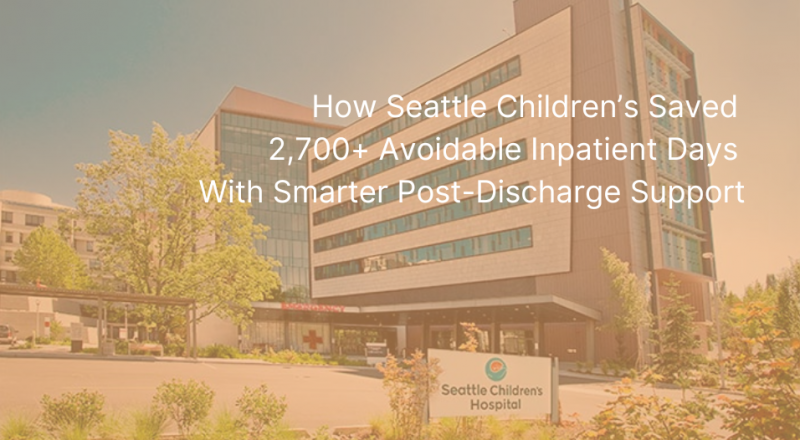Consumer demand is shaking up traditional industries more than ever. From Lyft to Airbnb, expectations for fast, convenient, and affordable options are allowing industry newcomers to grow and obtain significant market share across various market segments.
Healthcare is no different and arguably has more at stake in meeting patient demand, as financial incentives are tied to patient satisfaction and outcomes. Patients want the same affordable, easily accessible, and personalized options they have come to enjoy in other facets of their lives. However, the healthcare industry is struggling to keep up with these growing demands. According to a recent study, nurses spend 73% of their day on documentation and administrative tasks. Instead of conducting repetitive tasks with little value for patients, nurses can drive better outcomes by dedicating their specialized expertise to patient care. Understanding this, how can healthcare leaders address this challenge head-on by empowering their nursing staff to work at the top of their licenses?
Why Front-Line Healthcare Providers Need Workflow Automation
With growing documentation requirements, the administrative burden on nurses has ballooned over the last decade. Today’s nursing school graduates abide by this rule: “If it wasn’t charted, it didn’t happen.” By performing repetitive, potentially duplicative work, nurses must allocate significant time to tasks removed from direct care, leading to higher burnout rates.
Since provider engagement is an important strategy to drive better patient outcomes, addressing these challenges means more than hiring additional staff – requiring leaders to find smart ways of scaling processes and maximizing the resources at hand. By bringing automation into everyday processes, nurses can focus their expertise and specialized skillsets on care delivery.
How Automation Optimizes Experiences
To identify where automation technology can be valuable, it is essential to first understand what it means to automate. According to the International Society of Automation, automation is the creation and application of technology to monitor and control the production and delivery of products. Automation has been used in various industries to meet changing consumer demands. For example, retail companies understood they needed to tailor online shopping experiences to an individual shopper’s preferences. Personal shoppers enhance the in-store experience by recommending clothing items according to the client’s taste and style – creating an experience tailored to the individual. To create a personalized shopping experience for online shoppers, retail companies leverage automated technology that recommends items based on past purchases and recent page views. The success of online shopping may be attributed to the personalized experiences and instant gratification consumers receive. Similarly, automated technology can accelerate innovation in healthcare delivery by streamlining repetitive processes such that interactions can be tailored to the individual.
By leveraging automation in clinical workflows, hospitals and health systems can more effectively engage with patients without adding additional administrative burdens for front-line providers. Clinical workflows can be automated with enhanced clinical decision support, care management task assignment, appointment reminders, and post-discharge follow up outreach.
In the example of post-discharge follow up, hospitals can automate the initial outreach call or text to assess recovery status for all patients within a target population. The automated outreach triages those individuals who indicate concerns, empowering clinicians to engage patients with targeted and meaningful information. This contrasts sharply with traditional outreach methods, in which nurses become increasingly frustrated with unsuccessful attempts to reach patients with manual outreach processes.
Automated workflows ensure that staff not only have more meaningful conversations, but patients are connected to the resources they need more quickly. This reduces the likelihood of adverse events, such as avoidable readmissions.
How Workflow Automation is Accelerating the Healthcare of Tomorrow
By implementing the right technology that reduces repetitive work, hospitals and health systems will experience healthcare’s Quadruple Aim of improved patient outcomes, enhanced patient experiences, increased staff satisfaction, and lowered cost of care. To maximize labor efficiency ROI, leading healthcare organizations are leveraging automated technology to reallocate valuable nursing resources to direct patient care. When providers work at the top of their licenses, healthcare organizations are better equipped to face the growing challenges presented by the ongoing evolution of the industry.
To learn more about how automation is changing the healthcare industry, we invite you to check out these resources:








